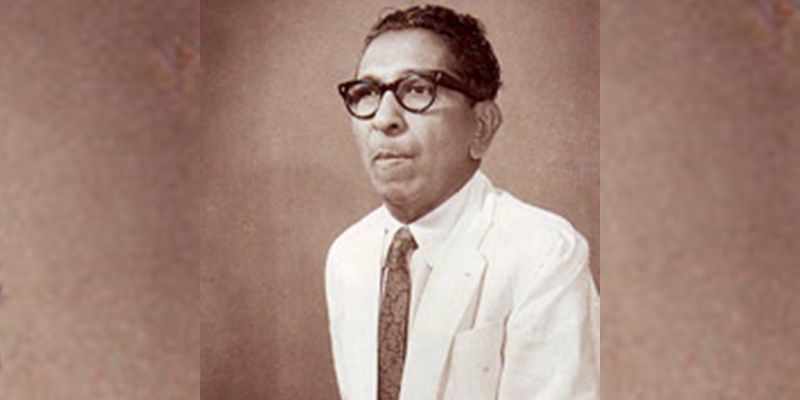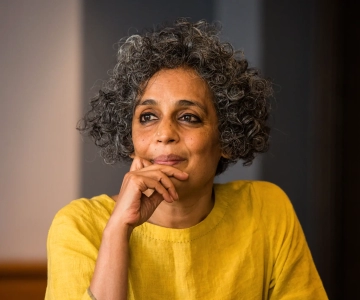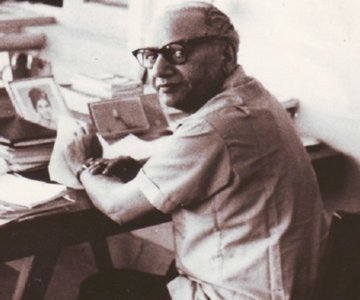A Poem by M.I. Kuruwilla
Carry a message to your own people, my friend,
Which will be well understood by your people,
Not ours- the creed of the material, phenomental
World as an illusion, you call it, Maya, don’t you?
Concealing but also symbolically revealing
A deeper order of reality. Do I sound philosophical?
You must excuse me. I cannot help it.
This view of things with a deeper reality
At a deeper level is intriguing. I am myself affected
To the extent of thinking of blood and terror
As fantasies, symbols. Isn’t it intellectually
Consoling – to think that violence, blood and terror
Are not real but only symbols of a deeper
Reality. Although I live in a firm word, I move
On two planes of reality- the mundane level,
And a deeper level of mystical yearnings and insights.
Yet the mystique of blood and terror is terrifying
Thing, not consoling at all. Passion and the craving
For power at a deeper level are murderous things.
Call it spirituality of blood and terror, if you
Like. But it is no joke to allow your face
To be blasted. No taking you first by the scruff
Of your neck even.
But I speak of none of those things here, the fear
And dread in the pursuit of Passion and Power.
Let them be. I would rather tell you of other mystical
Properties of violence and bloodletting. Although
We perpetuate violence to see an end to what we hate,
Violence is endless. Like Time. Though Time
Must have limit, time is endless, eternal.
Besides, our relationship with our enemies is
Of both love and hate, in which note a deeper
Dimension. Hatred is in the desire to exterminate
Our caemies. Our love for our enemies is in the care
We take for the continuance of violence..
Symbol and blood, blood and symbol. Why only
Symbols, you are asking. What about emblems?
You are right. They are there, when we often
Look at things horizontally, on the surface,
Not seeing the wood for the trees, if there is
Any wood to see. Look at the emblems of our culture
Which we are apt to overrate, but worth
Something, the surrogate and substitute fantasies,
The flotsam and jetsam of this our modern life.
Ponderous definitions! Let us have some model samples.
Yes the toothbrush, the sanitary towel- the tampon,
That covering for the female back under certain
Conditions. Don’t your Dakshina ladies in their
Shopping expeditions go in search of it two
To three thousand miles? We may call them universal
Symbols, being so ubiquitous – Nonsense!
We will stick to them as nothing but emblems.
But what is covered, is it at least universal
Appetites are universal, passions urges aren’t
They? Possessing uniqueness, individually too?
What universality, uniqueness in a word
Of throw- away tampons and throw-away condoms!
Emblems will always be emblems, But in the rotund
World, baubles too have their place,
Looked at representationally.
All these- dilettantish nonsense! Commodity
Rules the world, someone truly said. The spilling
Of blood is profitable. Next of kin to blood
Is arms – for an orgiastic embrace, the buying and selling
Of which is profitable.
How we forget the realities of life!
Farewell, fantasy symbols and emblems. Yesterday’s
Shopkeepers are now the most expert gunmakers.
The descendants of those who stormed the Bastille
For the Brotherhood of Man are the manufacturers
Of deadly missiles. Three hurrahs for Gallic Socialism,
And four for their Socialist President. Thou shalt
No kill, said the great Jehovah to prophet
Moses. Thou shalt kill, kill and kill again
In Jordan and Gaza. That is the new dictum
Which replaces all of Hammurabi and Moses.
Christ and Gautama. Arms have to be sold,
Blood has to be spilt.
Look! Can great powers survive without arms
And arms-trade? And if they can’t survive,
If they collapse, what is the future of mankind?
And your terrorist gangs- call them guerrillas
Or freedom-fighters- where do they get their arms
From? From the sources controlled by us. We know
The extent of their sources and resources.
We have prescribed the rules and the game
As to who wins, who loses. But the game
Must go on. It is such fun-and so profitable.
M.I. Kuruvilla An introduction to his work and ideas by Basil Fernando (Published in Channels Vol. 12 No. 1 – The English Writers Cooperative of Sri Lanka, October 2004).
Born in Kerala, India, on 19 January1918, M.I. Kuruvilla migrated to neighboring Sri Lanka and initially worked as a teacher at St. Joseph’s College, Colombo. He was among the founding staff at the Aquinas University College in 1954, and was Head of the English Department till his retirement in the late 1980s. He prepared undergraduate students for exams conducted by the University of Ceylon. Peradeniya, and Universities in England. He also taught English to University entrance students. He is known to many as a great teacher of literature, who also contributed literary criticisms to newspapers and radio, for which he won the award for non-fiction prose (literary criticism) in 1985. He introduced many new writers whose names are now well known.
Before passing away on 17 November 1993, Kuruvilla devoted the latter part of his life to writing. He published Studies in World Literature (Sterling Publishers, New Delhi), and many translations. The latter include From Comorin to Kashmir: An anthology of Malayalam short stories, (Navrang Publishers, New Delhi, 1989), The Wooden Dolls and Other Stories from the Malabar Coast (Karoor Nilakanta Pillai, Future Asia Link, Hong Kong, 1999), and The antecedents and the identity of the Modem Indian Short Story. His self-published Raving Brat and Other Poems (in two parts), secured the Sri Lanka Arts Council Awards for Poetry in 1988.
In this short note I will try to introduce some of the key ideas that Kuruvilla sought to spread regarding creative writing in South Asia. My sources are his own published writings and what I remember of the conversations I had with him, most at his residence on Muhandiram road, Dehiwela, where he lived with his wife and three children,
Perhaps the strongest idea he held was that the most enduring and universal art is that which has the deepest national and local roots He repeated this phrase often and several of his students have told me he repeated it in almost every lesson. He tried to demonstrate that the greatness of several Malayalam writers, some of whose work he translated into English was well rooted in their national and local ethos.
He wrote:
Writers like Thakazhi, Karoor and Bibhutibushan Banerji (1899-1950) possess a tremendous importance through their rootedness in their own native, local background, their preference for the parochial, the local and the national as opposed to the so-called civilized, urban and cosmopolitan. Perhaps he laid such a strong emphasis on this due to his fear, which he expressed quite often, of the tendency of local writers to attempt to imitate great Western authors. On the same theme he wrote: Who knows that the Literary Hall of Fame which Gerald Moore approvingly speaks of as filled with the immitigably Russian Dostoevsky and the immitigably American Melville may be filled with the unmistakably Malayalee Karoor and the incorrigibly Brazilian Machoda de Assis?
Kuruvilla saw the need to tell the stories of common folk in Kerala, Sri Lanka and further afield in South Asia: engaged in a frightful struggle; a struggle for survival against the intolerable pressure of poverty. He constantly narrated the kind of vigorous, local life that exists among the impoverished peasantry, outcast labourers, petty traders, minor government employees and .swabasha, or vernacular schoolteachers. Writing about one of his favorite writers, Karoor Nilakanthan Pillai, Kuruvilla observed that.
The truth about poverty is stranger than fiction. While the auction forsale of toddy and arrack goes on briskly among arrack rentiers, with the amounts steeply rising to several thousand rupees, a schoolteacher frantically rushes about in the crowd searching for a vendor of aerated drinks who owes him a quarter chakram, less than one cent, one hundredth part of a rupee. Exaggeration? No… Karoor’s social criticism is penetrating and sharp. There is a definite Marxist trend in modern Malayalam literature. But Karoor, without being a Marxist, has done more than any other Malayalam writer to unfold the frightful conditions of poverty in which large sections of the people live.
By way of illustration, Kuruvilla narrates a story. In Pathaeker- (Ten Acres), from the collection Smarakam (A Memorial; 1952) a low-caste family occupies a small parcel often acres of land, but are ejected by the owner with the help of hired thugs:
I hope there was no trouble, no violence.
What violence, Sir? Why should there be violence? We shaped him up as he came to his hut.
He didn’t do anything.-
He came howling all right. But soon he found himself tied to a tree.
As for his screaming, a piece of rag stuffed into his mouth…
Well, good that the matter was settled without much difficulty.
But one thing went wrong.
No… no… not that … the tree he was tied to was full of red ants.
That? Oh, that doesn’t matter.
He also believed that there is a unity in the divergent literature. What confers a kinship to the works, however far apart geographically or culturally they may be, what provides the universality is their inwardness, what is eternal, absolute, and unchanging (in the Baudelairean sense) embodied in the works
Though Kuruvilla spent most of his working life preparing undergraduates for university degrees, he did not become an academic in the popular sense of that word. In my view, Kuruvilla belongs more to what Danish educationist N.F.S. Grundtvig called the Folk School Tradition. His writings also show deep interest in people and society, and in particular, deep attachment to the ordinary folk. Obviously, Kuruvjlla acquired this tradition during his early upbringing in Kerala. In the latter part of his life he was very keen to promote close cooperation between South Asian writers, and to promote South Asian writing elsewhere.
http://www.ahrchk.net/pub/mainfile.php/hrculture/.
Your contributions and comments for future issues can be sent to ahrc@ahrc.asia.



